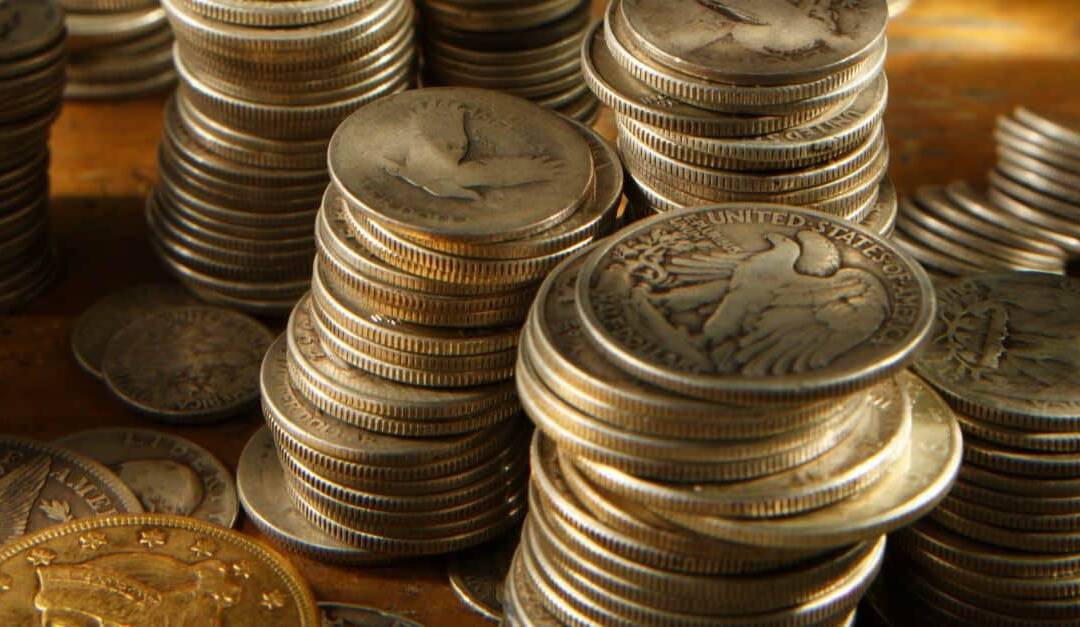Coin collecting, or numismatics, is a portal to the past, offering both historical insight and potential financial gain.
Coins are miniature pieces of art that carry the stories of empires, economies, and eras.
This article explores the top 10 rarest coins in the world, delving into their histories, the reasons for their rarity, and why collectors are willing to spend fortunes to own them.
1933 Double Eagle
The story of the 1933 Double Eagle is shrouded in mystery and legal battles, making it one of the most dramatic tales in the numismatic world.
Originally minted during the Great Depression, these coins were never officially circulated due to President Roosevelt’s order to remove gold from the economy. Most were melted down, but a few escaped, leading to decades of FBI investigations and secret deals. The coin’s allure is magnified by its survival against all odds, culminating in a 2002 legal case that allowed one to be privately owned.
1794 Flowing Hair Silver Dollar
This coin represents the dawn of the United States Mint and symbolizes the beginning of American coinage.
Believed to be among the first silver dollars struck by the U.S. Mint, its value is significantly tied to its role in establishing the U.S. economy. The coin itself might have been personally inspected and approved by then-Secretary of State Thomas Jefferson, adding to its historical and collector value.
1787 Brasher Doubloon
Ephraim Brasher, a noted goldsmith and neighbor of George Washington in New York, struck this coin.
Brasher’s doubloons were originally intended as a demonstration of his skills and a proposal for a new American coinage system. They were never adopted, but they remain as testaments to early American ambition and enterprise, making them incredibly rare and storied pieces.
1913 Liberty Head Nickel
Known as the “Mona Lisa of coins,” the Liberty Head Nickel’s tale involves a rogue mint employee who clandestinely produced five nickels with the Liberty Head design, which was supposed to have been replaced by the Buffalo Nickel.
These coins were secretly distributed and later surfaced under mysterious circumstances, adding a layer of intrigue and illegality to their legacy.
1937 Edward VIII Sovereign
This coin is rare because it features King Edward VIII, who abdicated the throne to marry American divorcée Wallis Simpson.
The coins bearing his likeness were minted but never circulated as he abdicated in the same year they were created. Their rarity is compounded by the scandal and constitutional crisis that ensued, making them some of the most intriguing coins in British history.
1822 Half Eagle
The 1822 Half Eagle tells a tale of survival.
As one of only three specimens known to exist from a mintage of 17,796, it represents the early 19th-century American coinage before mass meltings that claimed nearly all of its counterparts. This coin’s rarity is accentuated by its journey through time, surviving where nearly all others were lost to history.
2007 $1 Million Canadian Gold Maple Leaf
This massive coin isn’t just notable for its size and gold content but also for its symbolic demonstration of the Royal Canadian Mint’s craftsmanship and technological prowess in coin minting.
Weighing a staggering 100 kilograms, this coin was originally created as a unique promotional item to showcase Canada’s excellence in the field of coinage. It represents a modern marvel in the numismatic world, blending artistry with sheer value.
1907 Saint-Gaudens Double Eagle, Ultra High Relief
The 1907 Saint-Gaudens Double Eagle stands as a pinnacle of coin design, often considered the most beautiful U.S. coin. Commissioned by President Theodore Roosevelt, it was part of his pet project to beautify American coinage.
The ultra-high relief version was a technical challenge at the time, with its high-relief features difficult to strike properly, which limited its production. This blend of artistic ambition and technical challenge makes it a treasured rarity.
1343 Edward III Florin
Also known as the “Double Leopard,” the 1343 Edward III Florin is steeped in medieval history.
Valued not just for its rarity but also for its age and the story it tells of England’s pre-Renaissance economy, this coin was part of Edward III’s attempt to establish a gold currency in England, reflecting the king’s ambition to enhance commerce and the prestige of his reign. The coin failed as currency but remains a significant relic.
2007 Australian Kangaroo One Tonne Gold Coin
The Australian Kangaroo One Tonne Gold Coin was minted by the Perth Mint to showcase Australia’s capabilities in precious metals mining and coin minting.
It is not only remarkable for its size and purity but also as a symbol of national pride and an example of extreme minting capabilities. As the largest coin ever created, it holds a Guinness World Record and exemplifies how modern mints continue to push the boundaries of what is possible in numismatics.
The stories of these coins add a rich layer to their material value. They encapsulate moments of political change, technological advances, and human drama, making them not just collectibles but also historical artifacts.
Coin collectors cherish these pieces not only for their potential financial return but for their ability to hold and share stories from centuries past.
Happy collecting!




